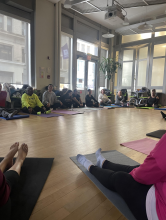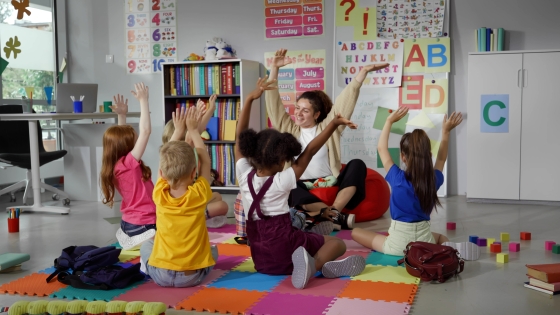
Mindfulness is the ability to be fully present, aware of where you are and what you are doing, and not be very reactive or overwhelmed by what is happening around you.
In the Path Program, mindfulness is used as a tool for supporting both educators and students, helping to reduce the negative effects of stress while increasing the student’s ability to remain engaged in class and reducing behavioral problems.
The Path Program is a whole-school inclusion program that supports students at risk for or classified with emotional disabilities (ED) to be academically, socially, and emotionally successful. Through a partnership between New York City Public Schools and New York University, Path integrates evidence-based practices for emotional and behavioral regulation with a culturally responsive, strengths-based approach to support the full inclusion of students with ED within their school communities. Through extensive and consistent collaboration of teachers, social workers, occupational therapists, administrators, and families, the Path model creates a safe space for students to develop and practice emotional and behavioral regulation and coping skills.
To bring this mission to life, the Path Program leans on the following four pillars:
- Co-regulation begins with the adult nervous system
- Belonging is at the center of every classroom
- A strength-based lens leads to unlimited possibilities
- Behavior is communication
These four pillars ensure that the classroom is a setting where students’ need for love and belonging are centered; that educators understand student behaviors and strengths to leverage them in the classroom; and that students can regulate themselves through mirroring their educators.
The Path Program emphasizes these pillars in its process of incorporating mindfulness into the classroom. With practices such as movement breaks and meditation, students learn the techniques to zone in on themselves, regulate their emotions, and be aware of their surroundings.
For many students, learning these mindful practices and strategies comes from modeling the adults around them. In the case of the Path Program, these models include educators, social workers (SW), occupational therapists (OT), and other school staff who interact with students.

This year, the Path Program included practices from the Institute of Human Development and Social Change (IHDSC) new program, Nourish & Restore: IHDSC’s Collective Care Initiative, in some of their seminars. Some of these practices included yoga with OTs and SWs, smoothies with teachers, and meditation with school leaders. Inclusions on these practices aim to help Path Program staff reflect on their wellness through “facilitated conversations and activities focusing on nutrition, stress reduction mindfulness, compassion, and community engagement and action”.
Incorporating these mindful activities in seminars and training sessions embodies the first pillar of the Path Program which is “co-regulation begins with the adult nervous system”. Co-regulation is the process through which children develop the ability to pacify and manage their distressed emotions through connection with a nurturing and reliable caregiver (adult). Through Path’s training sessions, Path educators and therapists can be better prepared to support students by modeling mindful practices and strategies.
Supporting students in regulating their emotions and behaviors through mindful practice enables effective communication of wants and needs between students and teachers. Mindfulness also prevents emotional and behavioral outbursts, ensuring a peaceful classroom environment, and allowing all students to remain in the classroom to learn together. These are a reflection of the remaining three pillars that support the Path Program.
Although the Path Program uses meditation and movement break as part of mindful practices in the classroom, mindfulness does not need to be sedimentary or include strenuous activity. You can integrate mindful practice into your daily activities including walking, eating, and talking with others by being fully present, aware of where you are and what you are doing, and not overly reactive to what's happening around you.

